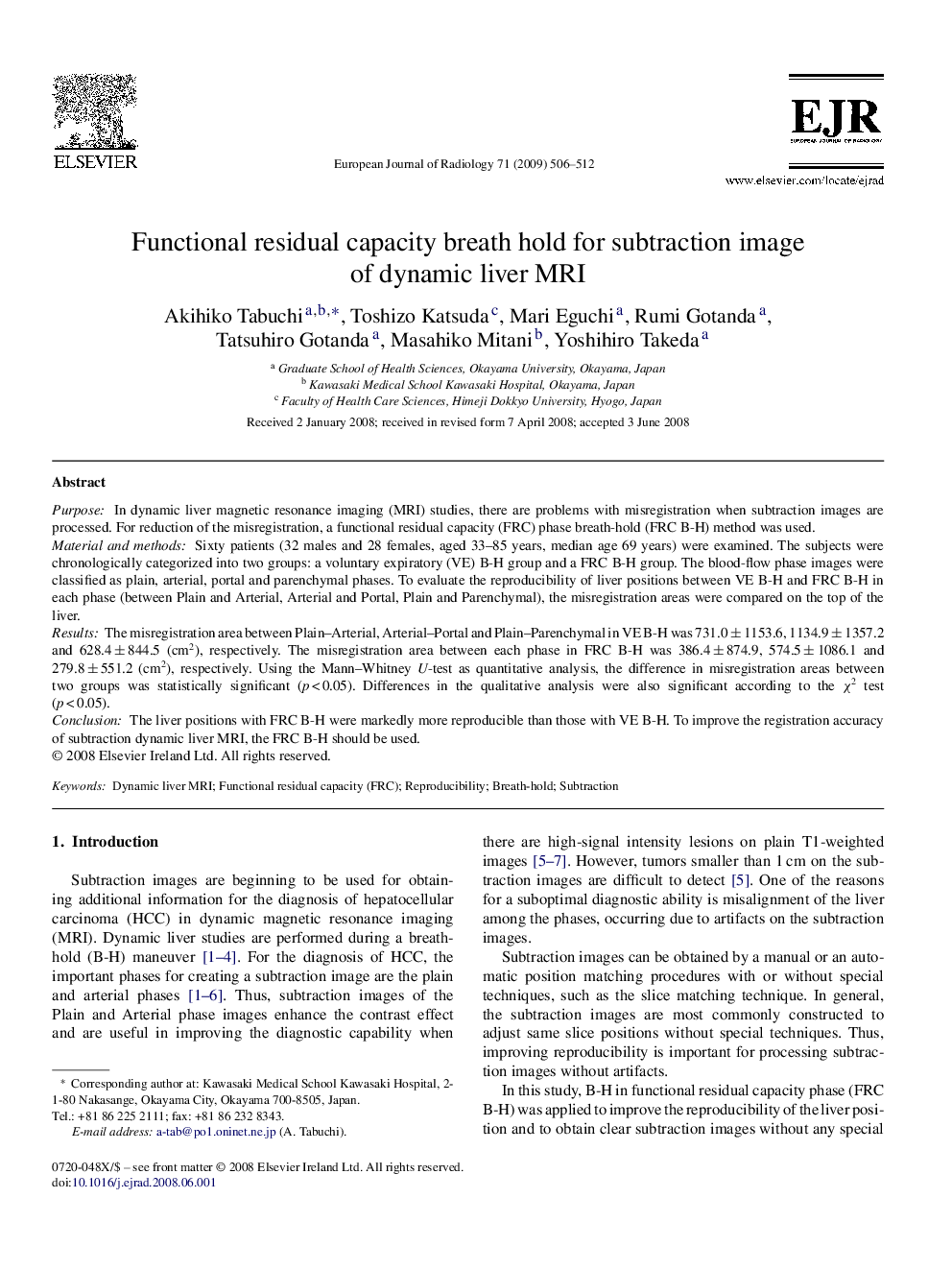| کد مقاله | کد نشریه | سال انتشار | مقاله انگلیسی | نسخه تمام متن |
|---|---|---|---|---|
| 4227548 | 1609823 | 2009 | 7 صفحه PDF | دانلود رایگان |

PurposeIn dynamic liver magnetic resonance imaging (MRI) studies, there are problems with misregistration when subtraction images are processed. For reduction of the misregistration, a functional residual capacity (FRC) phase breath-hold (FRC B-H) method was used.Material and methodsSixty patients (32 males and 28 females, aged 33–85 years, median age 69 years) were examined. The subjects were chronologically categorized into two groups: a voluntary expiratory (VE) B-H group and a FRC B-H group. The blood-flow phase images were classified as plain, arterial, portal and parenchymal phases. To evaluate the reproducibility of liver positions between VE B-H and FRC B-H in each phase (between Plain and Arterial, Arterial and Portal, Plain and Parenchymal), the misregistration areas were compared on the top of the liver.ResultsThe misregistration area between Plain–Arterial, Arterial–Portal and Plain–Parenchymal in VE B-H was 731.0 ± 1153.6, 1134.9 ± 1357.2 and 628.4 ± 844.5 (cm2), respectively. The misregistration area between each phase in FRC B-H was 386.4 ± 874.9, 574.5 ± 1086.1 and 279.8 ± 551.2 (cm2), respectively. Using the Mann–Whitney U-test as quantitative analysis, the difference in misregistration areas between two groups was statistically significant (p < 0.05). Differences in the qualitative analysis were also significant according to the χ2 test (p < 0.05).ConclusionThe liver positions with FRC B-H were markedly more reproducible than those with VE B-H. To improve the registration accuracy of subtraction dynamic liver MRI, the FRC B-H should be used.
Journal: European Journal of Radiology - Volume 71, Issue 3, September 2009, Pages 506–512